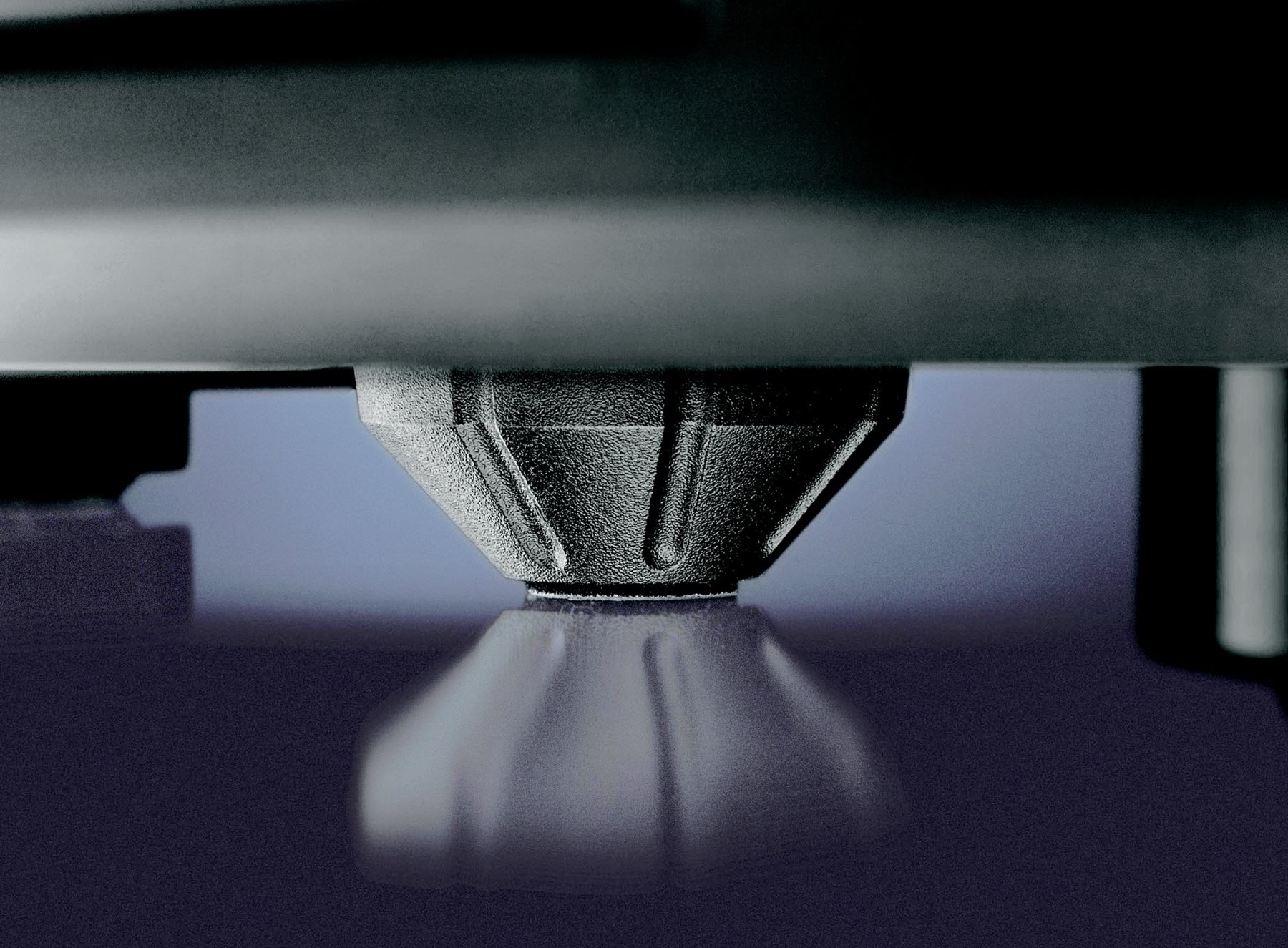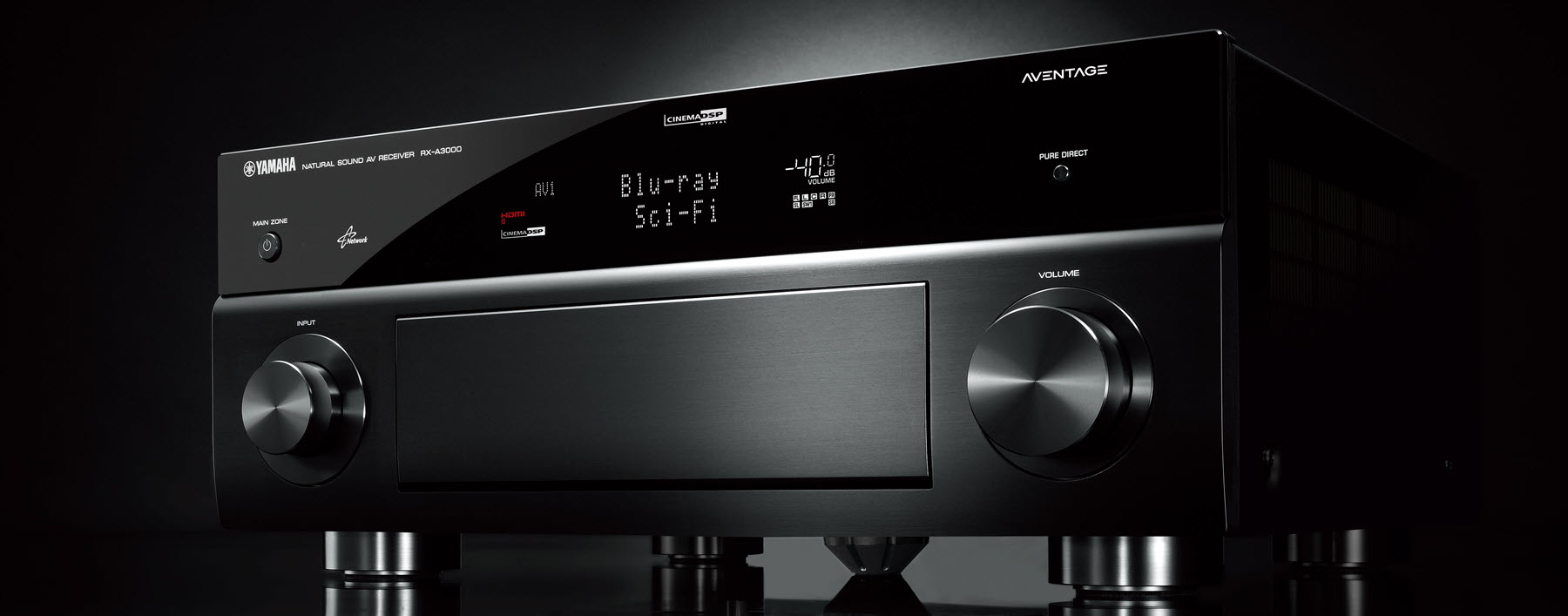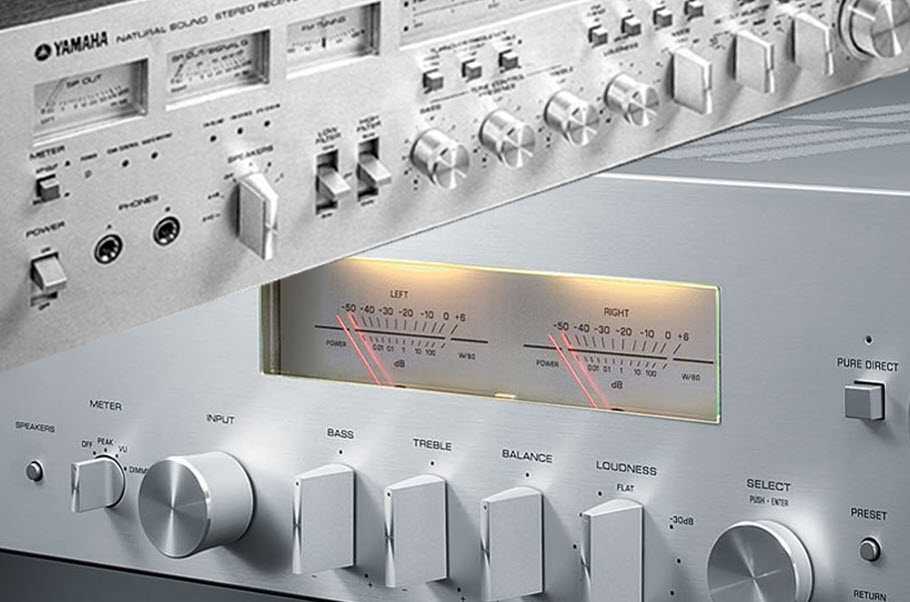Yamaha AVENTAGE: Setting the Reference Standard for AV Receivers
Discover the future (and present) of home entertainment.
The 2010 introduction of the Yamaha AVENTAGE line of AV receivers, with a name that stands for AV Entertainment for the New Age, was the culmination of an extensive two-year research and development project. The company’s engineering teams were tasked to find better ways to implement many important features from the ground up. The resultant product line would feature a unique spin on mechanical, thermal and electrical stability in order to faithfully recreate the dynamics and intricate detail found in music and movie soundtracks. Ultimately, AVENTAGE would become the reference standard to which other AV receivers are compared.
Ready to learn more? Read on …
Mechanical Stability
Vibration and resonances are detrimental to reproducing pure audio. For that reason, the Yamaha mechanical engineers were challenged with creating a rock-solid chassis. The final result was an integrated structural system where all mechanical elements worked together to achieve high levels of rigidity and vibration control.
The mechanical structure was based on a fundamental H-frame design that consisted of thoughtfully placed reinforcing brackets and bracing with new assembly techniques, giving it the rigidity to reduce chassis vibration to virtually zero, even during high volume output.

An A.R.T. (Advanced Resonance Technology) wedge, also known as the fifth foot, was located at the center of the bottom panel. It provides foundational support to the massive center-mounted power transformer and adds stability to the unit when it’s channeling hundreds of watts of surround sound to connected speakers. This has been a consistent element of the entire AVENTAGE line from the very beginning to the present day.

Thermal Stability
Transistor temperature variations are part of the physics of reproducing high dynamic signals like music, and must be electronically compensated for in real time. The more stable the temperature, the gentler the required compensation, leaving the music in a purer state.
Accordingly, instead of using off-the-shelf, uniformly thick slabs of aluminum with attached cooling fins as heat sinks, Yamaha developed a new custom design with most of the mass of the extruded aluminum heat sink on the lower part of the base, where the transistors are attached. This maximizes rigidity and at the same time increases the thermal stability of the high-power output transistors. With more mass at the transistor mounting points, temperature variations are minimized.

In addition, the heat sinks were placed on either side of the transformer for a symmetrical layout. Electrically separating the amplifiers for the left side of the room from those covering the right side of the room reduces the possibility of signal interactions. The result is lower noise and better signal separation, as well as increased cooling efficiency.

Electrical Stability
Separate input circuit boards were developed for analog audio, digital audio, control systems and video circuitry. While a more costly method, the sonic benefits of isolating these different types of circuits, and their unique power supply requirements, was deemed essential.

The high current sections of all circuit boards were examined for efficient signal flow. Where necessary, thicker conduction material was added — either thicker copper foil to the boards, or additional wire or copper jumper bars for the very high current sections.
For wire management inside the unit, it was observed that metal wire ties could act like miniature antennas, potentially adding unwanted noise to the system. Taking the extra step to electrically ground all the board-mounted wire ties was the simple solution. Even the main power fuse was evaluated for its sonic integrity. While many of these minute details on their own would not produce much in the way of sonic improvement, the sum of their contributions make up the foundation of the signature AVENTAGE sound.
Upgradability
What made the original AVENTAGE design even more special was its ability to be upgraded with each new generation. The first top-of-the-line model — the RX-A3000, which debuted in 2010 — was loaded with the most advanced technologies available at the time. But with only 7.2 channels of sound and 1080p video processing, it’s not all that impressive now, especially when compared to, say, the (now discontinued) AVENTAGE RX-A3080 released in 2018, which offered 11.2 channels of audio, along with support for Dolby® Atmos™ and DTS:X™, 4k UHD video capability and Yamaha Surround:AI™ — the world’s first artificial intelligence in an AV receiver.

The forward-thinking original AVENTAGE platform was robust enough to easily handle the technological innovations of the last decade. But, like all things in technology, there comes a time to update. The latest line of AVENTAGE receivers incorporate enhancements to the original concepts as well as accommodation for as-yet-unknown new technologies to come.
They also sport a new look and new features. The dual knobs, centered display screen and panel cover on the front panel of previous models have been replaced with a single knob in the center and an off-center screen. The chipset received a bold upgrade as well, with the RX-A8A, RX-A6A and RX-A4A models now supporting immersive 3D audio, enabled by the Qualcomm® QCS407 smart audio platform, which provides powerful quad-core audio processing for superior sound quality and a cinematic listening experience. All 2021 AVENTAGE receivers boast 8K HDMI capabilities, and the RX-A8A and RX-A6A provide support for AURO-3D, a 3D audio technology that adds an extra height layer to a standard surround sound mix.

By rethinking their design from the ground up and incorporating the latest technologies — as well as looking ahead at those to come — Yamaha has made the AVENTAGE line the reference standard for AV receivers. If you’re serious about home entertainment, you owe it to yourself to check them out.
Click here for more information about Yamaha AVENTAGE AV receivers.
Click here for more information about the AVENTAGE RX-A8A.
Click here for more information about the AVENTAGE RX-A6A.
Click here for more information about the AVENTAGE RX-A4A.















